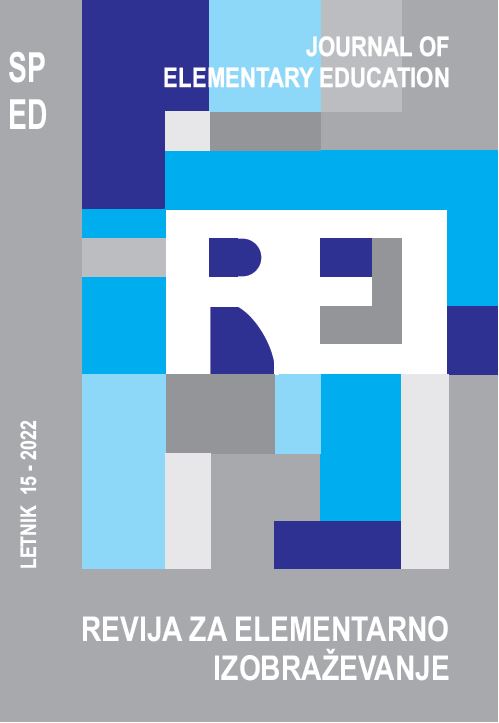Editors’ Introduction
Abstract
The inclusion of museums, galleries and cultural and natural heritage in school curricula and the high number of school visits to heritage institutions prove that museum pedagogy has a very important place in educational practise. The same cannot be said for educational theory, as there is a lack of research in the field of museums and education. Museum pedagogy is an interdisciplinary science that combines multiple theoretical and methodological approaches.
Bračun Sova analyses the structure of scientific information, which forms the basis for the interpretation of cultural heritage, through a case study of the Knights’ Hall in Brežice Castle in Slovenia. The author finds that the interpretation of the Hall of Knights is based on art historical information, with the results showing that attention is unevenly distributed, and more attention is paid to the Baroque motif of the four elements. The key finding is that in the museum we see the ceiling as part of the painting, but not as the highlight of the painting.
Authors Brajčić and Kuščević examine the museum as a space for non-formal and informal study and analyse the indicators of engagement by visitors, students of the Faculty of Arts at the University of Split. The research proves that the perception of the role of the museum among students has recently diverged and raises new questions about the need for further research in the field of student engagement in educational options. In her article, the author Govekar Okoliš examines various educational museum activities, using the example of the Slovenian School Museum on a sample of students from the Faculty of Arts at the University of Ljubljana. The results of the research show that lessons from the past as a pedagogical activity constitute an effective, lively, and active way to learn about the history of teaching for a group of university students.
An important topic in the field of mentoring is the article by author Kisovar Ivanda, who points out the potential of excellent mentors offered by museums, regardless of educational level. In the article, the author explores the views of teachers, museum educators and curators on the forms of mentoring in the process of personalising primary education in Croatian primary schools. Based on the research findings, the author proves the positive attitude of teachers, museum educators and curators towards mentoring through cooperation with educational institutions and cultural communities.
Kiurski points to the pedagogical value of museums, especially museum theatre. He introduces it as an interpretive tool, presents the theoretical framework, the sources of development, the use of theatre in museums in the twentieth and twenty-first centuries. The focus is on the twentieth century. Special attention is paid to the actual use of creative theatre in selected Serbian museums (Matica Srpska Gallery, Paul Beljanski Memorial Collection, Museum of the City of Belgrade, National Museum Kikinda, Museum of Vojvodina, and Jevrem Grujić House), highlighting its role as a pedagogical model in work with children and young people.
The authors Kozjek Varl, Duh and Herzog prove that successful didactic approaches, such as the aesthetic transfer method, can be used in the museum environment with equal success. They present a study of the successful results of using the aesthetic transfer method in an authentic space, the Art Gallery of Maribor, to explore contemporary visual art. The study was conducted through a case study with a group of students aged 12-14 years.
The role of museums in relation to interculturality is highlighted by Lӧseke, who explores how museums engage in transcultural museum education. In the article, the author presents the main findings of the evaluation of three educational projects at the Museum of Islamic Art in Berlin: 'Multaka', 'Tamam' and 'Objects in Transfer'. Drawing on the case of Islamic heritage in a culturally diverse Berlin setting, the author draws attention to the cooperative, inclusive and participatory relationship between museums and their audiences. The authors Milutinović and Selaković deal with current topics, i.e., epidemics, from the point of view of the online learning tools offered by museum websites. They also examine the content from the pedagogical point of view, focusing on museums in the Republic of Serbia. The data obtained show that museums offer authentic online learning paths that appeal to users of all ages. However, a deeper analysis of the research results showed that the museums' online learning content is focused on conveying museum information. The study therefore concludes that the museums’ online content is best suited for a group of students or adults who can more easily foster their own initiative and internal motivation for interest, learning and exploration of individual topics, or for those who have enough prior knowledge to understand the museum content.
In her contribution, the authors Zadravec and Miklošević examines the role of museums from the perspective of teachers at grammar schools and vocational high schools. In particular, to what extent both are committed to active visits and excursions with students and what kind of cooperation they would like to see. The results show that there are differences between teachers in grammar schools and those in vocational high schools, especially in terms of increased willingness to collaborate with museums, collaboration with each other and curriculum design.
The international contributions in the thematic issue represent an important scientific contribution not only in the field of museum pedagogy, but also in the field of general education. This is constantly influenced by social change, so that, as the researchers emphasise, it is important to constantly investigate, both on large, representative samples and on smaller samples or individual cases.
Downloads
Copyright (c) 2022 Rajka Bračun Sova, Jerneja Herzog

This work is licensed under a Creative Commons Attribution 4.0 International License.
